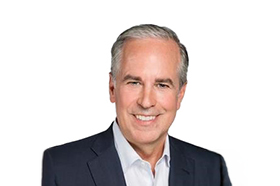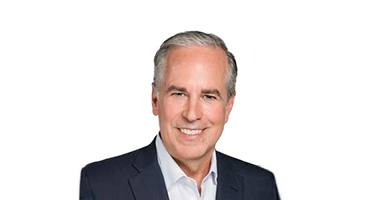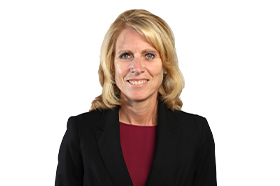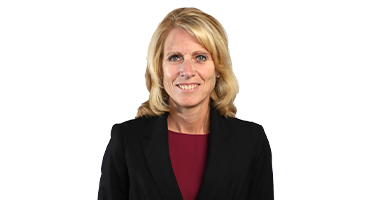An optimized enterprise operating model supports your vision
Many high-growth companies in the current market find they are like a sports car with a faulty engine.
The gleaming chrome of rapidly growing customer bases and service opportunities looks great in the driveway. But without the processes, people, technology and other key operating model elements beneath the hood, they’re going nowhere fast.

“Whether they’re trying to grow organically or attempting to drive growth after a transaction, many companies just don't pay enough attention to the operating model.”
To be successful, an enterprise’s growth strategy needs to be supported by a strong, well-functioning enterprise operating model.
“Whether they’re trying to grow organically or attempting to drive growth after a transaction, many companies just don’t pay enough attention to the operating model,” said Grant Thornton Growth Advisory Principal Jonathan Eaton. “If they’re going to hit their growth targets, it’s imperative to look carefully at their operating model.”
Each of the elements of an effective operating model is essential for supporting growth goals. A company that’s severely lacking in any of these areas will quickly find itself collapsing under the weight of an unsustainable vision.
This graphical illustration shows how a well-functioning enterprise operating model underpins a successful growth strategy. The graphic shows that the elements of the operating model include people and culture; process, technology; the organizational design model; data; and reporting.
Elements of your operating model
The key elements of the enterprise operating model are:
People and culture: Leadership needs to make sure the organization has the right talent and skills to support the operating model both now and in the future. In a high-growth environment, this typically entails plans for staffing to meet both the current needs and future scaling requirements.
Leaders need to consider how they will attract and retain the right people, as well as how they will upskill and develop them. A succession plan for leadership helps motivate workers with high potential and is necessary to keep the top of the organization from decaying as leaders retire or move on to other organizations.

“You need to understand the cultural impacts of the operating model optimization and help your people navigate through this change journey.”
Establishing a culture that sustains growth is important. If innovation is the key driver of your growth strategy, you’d better cultivate a strategy that encourages your people to experiment and doesn’t punish them for ideas that fail. Cultural sensitivity also extends to the enterprise operating model improvement process itself.
“Alignment to this operating model change doesn’t need to be jammed down their throats,” said Grant Thornton Growth Advisory Principal Tom Joseph. “Every operating model change has an impact on people. You need to understand the cultural impacts of the operating model optimization and help your people navigate through this change journey with a sense of purpose related to their contributions to the business objectives.”
Another essential cultural objective is cross-functional collaboration.

“You want the teams from different areas within the organization…to share the same vision and drive toward the same goal.”
“You want the teams from different areas within the organization, whether it’s finance or supply chain or HR, to understand and share the same vision and drive toward the same goal,” said Grant Thornton Growth Advisory Principal Rachel Wieder. “You want to have people understand and agree on their roles and responsibilities.
Process: By fixing or replacing inefficient processes, organizations can often realize benefits in both their revenue and cost metrics. One tactic that many leading companies are embracing — often with the help of third parties — is process mining, which involves extracting and analyzing the digital event log data within systems to gain an in-depth understanding of transactional processes.
Leadership may have a hypothesis about what’s right and wrong with their processes. Process mining can confirm or disprove those hypotheses and expedite process improvement. Done right, this activity will make mapping of current processes easy and enable transformation of processes for a future state that aligns with the organization’s growth strategy.
“You can mine the data to identify the gaps and issues, and it really accelerates the delivery of process transformation,” Eaton said.
Companies with sensitive data — for example, healthcare providers — that use this technology need to make sure they are complying with data protection regulations as they mine their data. But when processes are improved, controls throughout the organization are also typically upgraded. Process improvements identify poor controls, poor discipline and people operating outside the boundaries of controls, enabling the creation of a stronger control environment.
Technology: First and foremost, the right technology enables effective processes and scalable growth. Technology needs to be configured correctly to bring these processes to life and enable them to execute.
When done correctly, the enterprise operating model design integrates different types of technology that are fit for various purposes across the organization, based on the needs of the different functions.
“In banking, for example, improving efficiency and effectiveness is very important right now,” Joseph said. “They’re looking for ways to scale their business differently. They’re looking for more customer-facing opportunities for self-service. They’re looking at top-line revenue opportunities associated with increasing their customer base. Technology plays a key role in all of this.”
In each case, it’s important to identify the business need and find the appropriate technology to handle it, rather than applying the most popular new technology just because everybody is talking about it. “I want to use AI because I think my competitors are using it” is not an effective tactic in your enterprise operating model.
A more useful approach is, for example, to identify high-transaction processes with significant manual inputs and use robotic process information to decrease labor needs and improve data integrity. In some cases, AI might indeed be the technology you need, but it’s always important to select the right tools for the particular use case.
Organizational design model: Supporting growth requires an evaluation of the capabilities that exist within the organization and an identification of gaps that need to be filled to deliver on a company’s short-term goals and enable the accomplishment of objectives in the more distant future.
Leaders need to understand if they have the right people and skills; if they don’t, they need to figure out how to get the resources they need. As the operating model evolves, leaders need to communicate skillfully, explaining to people their role in the changing model and what it means for how they do their job on a day-to-day basis.
People need to be trained. Adoption needs to be tracked. And leaders need to make sure people don’t revert in a few days or a few weeks back to the same inefficient processes they performed previously. A data-driven approach enables this transformation of roles and responsibilities.
“When you have alignment to strategy and you’re creating the operating model, you can measure this with your key performance indicators,” Wieder said. “If it’s an agile model, you look for continuous improvement and regularly assess and adjust the model based on those performance results.”
Data: Without the right data, the rest of the elements of the enterprise operating model fall apart. Your data provides the building blocks for every system and process.
“There has to be an emphasis on evaluating the efficacy and the integrity of the data,” Eaton said. “If there are issues, there has to be a commitment and an intentional effort to scrub and clean data so it is fit for purpose to execute on the operating model and enable people to make the right decisions.”
Having the right controls over data enables integrity and sustainability to drive the right decisions in the present and the future. And having the right data and visibility into that data enables effective risk management.
Reporting: The right reporting and analytics enable the business to pursue growth in a way that’s proactive rather than reactive.
“Successful enterprise reporting model design allows management teams and departments to have access to the reporting and information they need to deliver on their objectives,” Eaton said.
This is an area where improved technology has led to rapid advances in the past several years. Advanced algorithms using increasingly rich data sets have enabled internal reporting that leads to more effective and timely decision-making.
The benefits of optimization
In many enterprising operating models, some of these components are well-developed, others are adequate for the current state, and some are just plain inadequate for any state.
Optimizing all the elements of your enterprise operating model keeps you moving toward your goals and enables a growth strategy that will provide scalable profitability that benefits your customers, your people and your leadership.
Contacts:



Jonathan Eaton
Principal, Business Consulting
Grant Thornton Advisors LLC
Jonathan is a Principal in the Operations & Performance practice.
Charlotte, North Carolina
Industries
- Manufacturing, Transportation and Distribution
- Technology, Media and Telecommunications
- Energy
- Retail and Consumer Brands
Service Experience
- Advisory Services
- Business Consulting



Tom Joseph
Principal, Business Consulting
Grant Thornton Advisors LLC
Tom is National Managing Principal in Grant Thornton’s Advisory Services practice. He serves as its Operational & Organizational Transformation (O&OT) practice leader and is a global Diamond/Key account lead for several of the Firm’s largest and most strategic clients. He also serves the Firm as East Region Industries Leader and national Banking Sector go-to-market Co-Chair.
Charlotte, North Carolina
Industries
- Asset Management
- Banking
- Insurance
Service Experience
- Advisory Services
- Operations and Performance
- Commercial and Growth
- Transaction Advisory
- Business Consulting



Rachel Wieder
Principal, Business Consulting
Grant Thornton Advisors LLC
Rachel is a leader in Grant Thornton's Agile & Program Leadership and Life Sciences practice.
Iselin, NJ
Industries
- Manufacturing, Transportation and Distribution
- Life Sciences
- Healthcare
- Construction and Real Estate
Service Experience
- Advisory Services
- Operations and Performance
- Commercial and Growth
- Transaction Advisory
- Business Consulting
Content disclaimer
This Grant Thornton Advisors LLC content provides information and comments on current issues and developments. It is not a comprehensive analysis of the subject matter covered. It is not, and should not be construed as, accounting, legal, tax, or professional advice provided by Grant Thornton Advisors LLC. All relevant facts and circumstances, including the pertinent authoritative literature, need to be considered to arrive at conclusions that comply with matters addressed in this content.
Grant Thornton Advisors LLC and its subsidiary entities are not licensed CPA firms.
For additional information on topics covered in this content, contact a Grant Thornton Advisors LLC professional.
Trending topics

No Results Found. Please search again using different keywords and/or filters.
Share with your network
Share